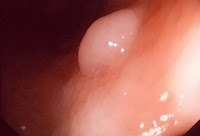Skin Care - Para sa Kalawasan
SKIN CARE ADVICE
In Face Care, Skin Care
There are a lot of skin care tips available for us, but not all are as effective as we think it is. See, if you achieve good results with how you take care of your skin, that doesn’t mean that it will be effective to someone else. So, it is best that you know your [...]
SKIN CARE FOR A YOUNGER AND CLEARER SKIN
In Anti Aging, Skin Care
There are a lot of ways to bring out your skin’s radiance. See, as we age, skin problems get visible. We know that there are a lot of ways that you can do to keep your skin looking good. Here are more skin care tips that can help you in achieving a younger and clearer [...]
Watch: My Best Tips to Make Your Skin Look Younger
EXPERT SKIN CARE TIPS
In Beauty Products, Skin Care
There are a lot of skin care tips available for us to do. In line with this, there are also a lot of skin care products that you can use to keep your skin healthy. There are also skin beauty product reviews available for us, to guide us on which products would be best for [...]
SIMPLE SKIN CARE TREATMENTS
In Beauty Products, Skin Care
With all the things that you’re doing every day, may it be at work or school, the last thing you’d want to think about is how you can make your skin remain glowing and look healthy. See, most women would buy beauty products that will help release their skin’s radiance, but did you know that [...]
MORE THAN ANTI-AGING REGIMENS
In Anti Aging, Skin Care
Most of us would love to keep our skin looking good. When it comes to skin care, the first thing that comes into your mind would be a number of beauty products. This isn’t a bad thing though, but have you ever thought of other things to keep your skin healthy? See, more than skin [...]
SKIN CARE RESOLUTIONS
In Anti Aging, Skin Care
Maybe now is the right time to get back on your feet and start having the proper skin care. Let’s face it, there are still a lot of women who would occasionally sleep with her make up on, doesn’t apply sunscreen, or neglects to have an appointment to consult a dermatologist with the proper solutions [...]
ACNE MYTHS
In Face Care, Skin Care
One of the most common problems of women today is the development of acne on their skin. This is why most face care products that women would buy are the ones which will help them remove acne on their skin. There are also a lot of skin care reviews available which will help prevent acne [...]
2012: BE KIND TO YOUR SKIN
In Face Care, Skin Care
What to do this year? Maybe one of the things that you should focus on is your health. Don’t forget your skin, since it’s a reflection of how “healthy” you are. We have been saying these all the time and maybe you know this already: skin care is important. No matter how busy your day [...]
THE SECRET TO AGE GRACEFULLY
In Anti Aging, Skin Care
Most women are having a hard time looking for skin care products that will make their skin glow and young-looking. Most of us would invest on skin products which we believe will help us release the best in our skin. However, when it comes to choosing the right anti-aging products, you only need to remember [...]
THE BEST WAY TO TREAT PORES
In Beauty Products, Skin Care
The worst thing that you can do to your skin is to leave your pores untreated. See, once you don’t treat your pores, they will eventually become clogged and enlarged. Especially when you have dry skin, pores may look worse than how it really looks like. Don’t worry, because there are skin care tips which [...]
source from Skin Beauty Reviews
Download:









